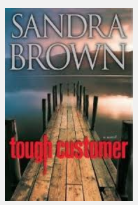My school had our first Parent Math Night this week, and I was in charge. That's what happens when you share your vision at a leadership team meeting and people like what they hear. I've had this vision for three or four years now, so even though it's taken some work to pull off, it's rewarding to finally see it become a reality.
My vision originated from the very first night of MTI (Mathematical Thinking for Instruction) provided by my state. (Pre-Common Core, Idaho required all math teachers to take this course.) The very first thing my instructor did was give us a math problem to solve in any way, shape, or form. I believe it was a 3-digit problem, but I can't remember if it was addition or subtraction. While we were computing, he was moving around the room, interacting with teachers, and asking certain ones to write their strategies on the board. Once there were about five strategies up, he asked those teachers to describe their thinking. There was much interaction between the instructor and the group as he facilitated making connections between each strategy. This whole experience kind of blew my mind. I got great grades in math but was a huge rule follower, so I had no idea there were so many ways to solve a problem. I was immediately won over and could envision giving the same experience to my own mathematicians. And I did just that. I still do.
This is what I also wanted for parents. While parents want and need strategies for helping their kiddos, more importantly, they must be won over. They must understand why math looks different now than when they sat in a math class. They must be able to see the rewards of their own children learning a different and better way. With all the negative voices on social media adding to their already growing confusion, teachers must give them a reason to not believe everything they read and hear. What better way to be won over than to experience a piece of it themselves.
We only had the parents for 60 minutes, and we crammed a lot in. Here's a simple outline.
* We asked them to quickly jot down a math memory (good or bad) and place it on a happy/sad continuum, followed by a great discussion.
* We asked them to solve the problem 61-19, sent certain parents to draw their solutions on the board, and asked those parents to explain their thinking. Most importantly, we then had a discussion about the benefits of experiencing math this way.
* We asked them to read some research about math instruction, and we facilitated a conversation about what they thought.
* We showed them a video of children in a 6th grade math class learning about area and perimeter in a real-world, engaging, hands-on way, and we facilitated a conversation about what they noticed.
* We shared specific grade-level tips and typical models and asked for questions regarding both. (Each grade level presented on their own. This was the only part of the presentation that was grade-level specific so that no matter what grade level a parent went to, they basically experienced the same presentation. This definitely helped solve the problem for parents who have children in multiple grades.)
* We asked parents to fill out a reflection form so we could know what they found most helpful and where they still need assistance. That way we can prepare for next steps.
Here is the slide presentation. Click on the graphic to view. Notes are also included.
This is the first parent handout.
This is the research page that parents read, copied onto the back of the first page.
This is the first grade tips and models page. Each grade level had their own version of this sheet.
The models were handwritten. You'll see first grade's below.
This is the reflection page that parents filled out.
Click here to see these parent handouts.
Our numbers were smaller than I would have hoped, but we didn't invite children, who are typically good at dragging parents to events. (We did provide childcare though.) This night was all about meeting the needs of parents, so we wanted them, as well as teachers, to be free of distractions. Regardless of the small crowd, I've heard positive feedback from those who were there.
Our parents really do deserve to be educated, so my hope is that we do something similar in the future. At the present, parents are stuck in a place of ignorance, which is not their fault, and ignorance leads to frustration for both them and the little people who they are trying to help at home. Schools have a responsibility to step in and change that.
P.S. I had a helpful team of people helping me along the way too. Our instructional coach was a great collaborator on the event.

























